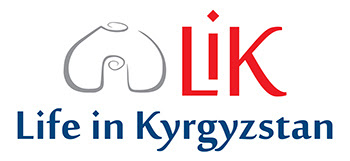The Vulnerability Assessment Framework (VAF) is a tool developed by UNHCR, the UN Refugee Agency, in Jordan to track changes in refugees’ living situation over time. In 2023, ISDC was tasked with supporting the development of a new module to this framework that can measure climate vulnerability: the climate change vulnerability index. This index would […]
Read More
On the 17th and 18th of April, the world of peacemaking descended upon Berlin to attend the Berghof Foundation’s new conference: The Berlin Moot. Under the theme of ‘Reshaping Peace’, more than 300 experts from around the world came together to take stock on the current state of peacemaking and discuss concrete suggestions for the […]
Read More
Every year, the Centre for the Study of African Economies (CSAE) hosts a conference brings together actors from across the development economics community to present and discuss research on Africa. This year, ISDC was represented by Behavior Research Program Director Wolfgang Stojetz and Dorothee Weiffen from our Welfare Research Program. Each presented a research paper […]
Read More
Under the theme “Towards Zero Hunger,” ISDC Director Prof. Tilman Brück gave a KOSMOS on 15 February 2024 at the Humboldt University, Berlin.
Read More
New ISDC research delves into the intersection of the COVID-19 pandemic and food insecurity, uncovering alarming insights into their collective impact on mental health across Mozambique, Sierra Leone, Tanzania, and Uganda. The study, titled “COVID-19 Pandemic and Food Insecurity Fuel the Mental Health Crisis in Africa” was conducted cooperatively with researchers from ISDC, the University […]
Read More
We’re thrilled to share that our research is featured on VoxDev with our new blog, “Exposure to collective gender-based violence causes intimate partner violence“. The blog is based on ISDC Director Tilman Brück and Behavior Research Program Wolfgang Stojetz‘ 2023 article in the Journal of Development Economics, studying some of the long-term consequences of the […]
Read More
The 2023 Annual Workshop of the Households in Conflict Network (HiCN) took place at the Solvay Brussels School of Economics and Management of the Université Libre de Bruxelles. Prof Philip Verwimp hosted the workshop under the theme of Trust and Development. Every year since 2005, HiCN has organized this workshop to foster academic research and discussion […]
Read More
Melodie Al Daccache, from our Welfare Research Program, traveled to Lilongwe, Malawi this month to present at the ANH Academy – Agriculture, Nutrition and Health Week 2023. There, she presented a paper (currently under review) on short- and medium-term impacts of a vegetable support intervention on food security, based on evidence from our work in […]
Read More
In June, Behavior Research Program Director Wolfgang Stojetz traveled to Palermo to speak as a Senior Expert at ‘“Working & Networking” on Climate Change and Innovation for Sustainable Agrifood Systems’. Wolfgang discussed compounding climatic and non-climatic challenges in North-east Nigeria, based on the work we are doing for a project funded by the Food and […]
Read More
Behavior Researcher Piero Ronzani and Welfare Senior Researcher Aysegül Kayaoglu traveled to Bologna, Italy this June to present at the 22nd Jan Tinbergen European Peace Science Conference. The annual conference gives researchers the opportunity to speak on any issue broadly related to peace and security and is hosted by the Network of European Peace Scientists […]
Read More
Tilman Brück, Wolfgang Stojetz, and Mekdim Regassa presented the results of our joint Life with Corona – Africa project at the German Federal Ministry of Education and Research (BMBF) this week. We presented at the BMBF’s Status Seminar, where all the projects funded under the “Ethical, Legal and Social Aspects (ELSA) of Modern Life Sciences” […]
Read More
Peacebuilding Researcher Lame Ungwang and Welfare Researcher Dorothee Weiffen traveled to Gothenburg, Sweden this month to participate in the Nordic Conference in Development Economics (NCDE). Spread over 3 days, the annual conference brought together 100 participants in development economics from across Europe. Doro presented early-stage work from our project in South Sudan in a session […]
Read More
ISDC Director Tilman Brück is presenting preliminary results from a joint project with the International Trade Centre (ITC) at a joint HiCN-UNU WIDER-NEPS Workshop titled ‘War and Reconstruction in Ukraine’ in Helsinki on 8 May, 2023. The workshop and subsequent policy panel will link stakeholders across research and policy communities to build up combined capacities. […]
Read More
More than 10 years after the publication of the State of Food and Agriculture (SOFA): Women in agriculture report, the Food and Agriculture Organization of the United Nations (FAO) has published a new report: The status of women in agrifood systems. The 2010/2011 SOFA report went into detail describing the costs of gender inequalities for […]
Read More
ISDC Director Tilman Brück‘s recent article (with Mekdim Regassa from the Leibniz Institute for Vegetable and Ornamental Crops) in Food Security is now also available in print. The article surveys efforts that track food security in Africa using phone surveys during the COVID-19 pandemic. The authors recommend that the scientific community focuses on countries (and […]
Read More
Building on our FAO Impact Evaluation in Syria, Ghassan shared insights on how we developed unique approaches to account for the ongoing crisis in our study. The session took place on the 23rd of February, 2023 and will also featured contributions from Jeannie Annan (International Rescue Committee), Marcella Vigneri (London School of Hygiene and Tropical […]
Read More
Forced displacement and its impact on lives and livelihoods are a common theme in ISDC’s research. According to UNHCR estimations, more than 100 million people were forcibly displaced as of May 2022. Our work contributes to understanding the myriad of consequences displacement has for displaced and host communities, including on how (groups of) people live […]
Read More
Difficult climate conditions can create or exacerbate fragility – how can we better understand this in vulnerable populations? To mark Earth Day 2022, we are sharing key findings about climate change, climate emergencies, and food security from around the world. • Climate change is associated with extreme weather events such as excessive cold, rainfall, & […]
Read More
The order of magnitude of the economic burden of war is comparable to that of other ‘global public bads’, such as climate change, land degradation, alcohol consumption or malaria. Figure 1. Distribution and structure of the burden of violent conflict in 2014 Disaggregation of the relative burden of conflict per country worldwide. In 2014, the […]
Read More
Displacement trends show that developing countries host most of the world’s refugees and are dealing with displacement that lasts longer today than in the past. UNHCR sees an opportunity to improve outcomes for both refugees and host communities by combining humanitarian and development strategies. In collaboration with Julian Lehmann and Julia Steets of GPPi, our […]
Read More
SEEDS for Recovery evaluates the long-term impact of a complex agricultural intervention conducted by FAO in acutely conflict-affected Syria. The project, funded under the CEDIL– Centre of Excellence for Development Impact and Learning initiative, is a collaboration between ISDC and the American University of Beirut. The 3-year duration (2020-2023) project aims at developing and testing innovative methods for evaluation of FAO’s agricultural […]
Read More


